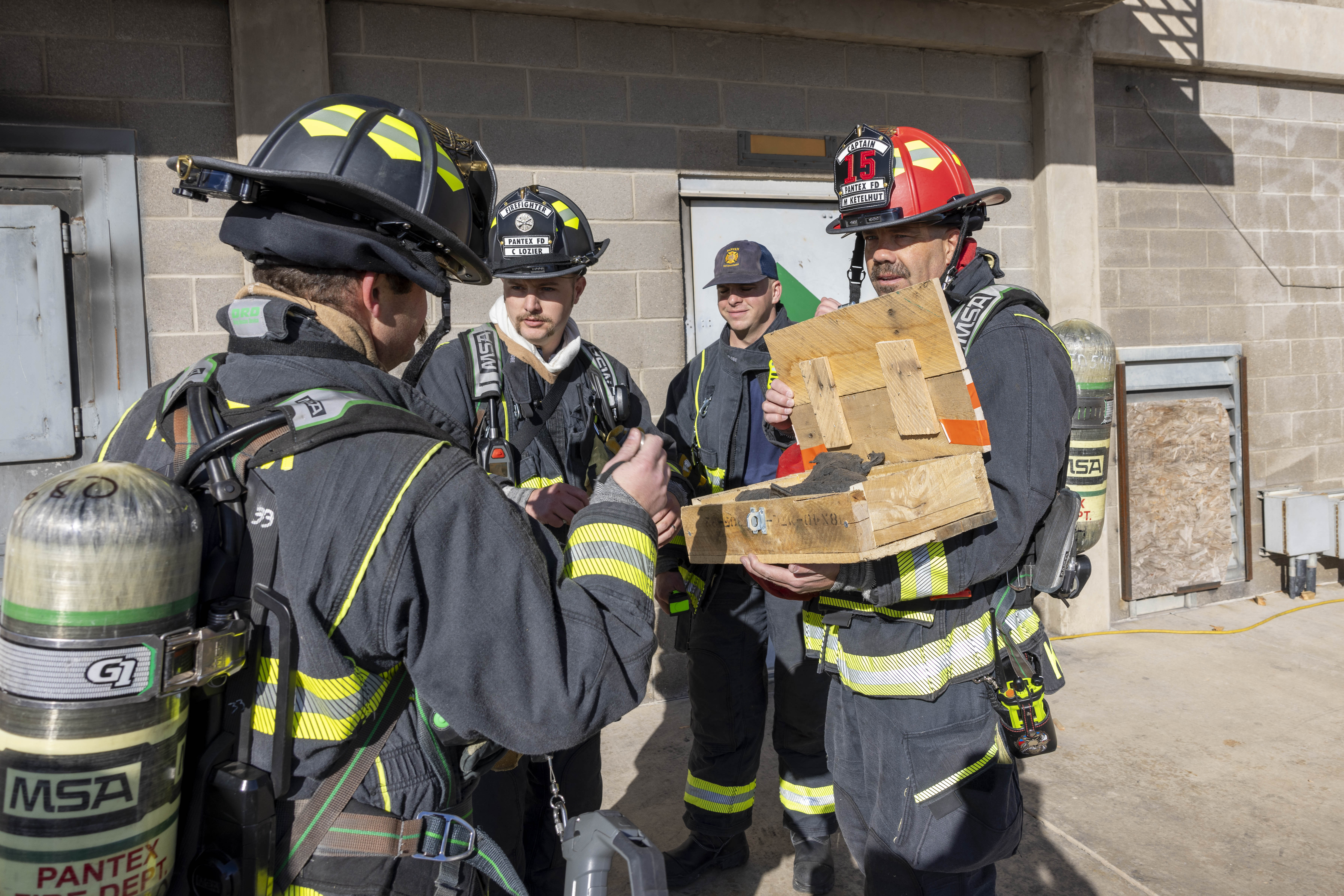Firefighters find new skills in scavenger hunt training

Captain Matt Ketelhut shows his crew a box found during scavenger hunt training at Amarillo College East in December.
I am always hungry. I must always be fed. The finger I touch will soon turn red. What am I?
Riddles are a part of life, maybe not in the “answer this to pass” way, but in the way that every day presents problems that need solved or situations where choices must be made—especially if you work in emergency services.
That is why when Pantex Fire Department Captain Jeremy Lyman saw scavenger hunt-style training online, he knew it would benefit his firefighters. Most first responders quickly know the answer to the riddle above is fire, but some riddles may be a little harder to solve. Scavenger hunt training combines potential real-life situations with critical thinking puzzles to complete a mission.
Training began with small groups in November at Amarillo College East and will continue through early 2025. The scavenger hunt involves nine different calls, including a variety of situations such as extrication exercises, potential fire scenes, and rope rescue. Training intentionally includes less-than-ideal conditions to simulate what could happen at a real scene.
“In a scenario where someone is locked out, firefighters have to defeat the lock without damaging the door, using different equipment to get the lock off and manipulate the deadbolt to get the door open,” Lyman said. “Once they get in there, there’s a box with a clue in it—something about rope rescue, but the building has no light, so whatever they bring in with them is what they have to work with.”
Lyman says training like this builds teamwork, enhances communication, and expands critical thinking skills. Small groups of four firefighters, enough to make up an engine company or a crew, work together to respond to incidents, create solutions, and stay true to the mission of preserving life and property. Resourcefulness and thinking outside of the box is critical for participants.
“It’s important because being a firefighter you don’t have to be good at one or two things; you have to be good at a multitude of things,” Lyman said. “You have to train in all of those areas in case the need arises for that one day. You need to be prepared for anything that will happen. This training covers a wide variety of emergencies firefighters could respond to. Most of these scenarios could happen out here at Pantex or our responding area with our mutual aid partners.”
Once a call is complete, trainers simulate going back into service so participants are ready for the next challenge, then they are dispatched to a new location.
“They have to change the channels on the truck radio and the portable radios, looking at maps and different resources to navigate the various addresses involved,” Lyman said. “It builds and improves on teamwork, problem solving, effective communication, and working under sub-optimal conditions.”
Firefighters are required to achieve at least 30 hours of continuing education credits per year, including classroom, online, and hands-on training like this.
“It’s something different, a more firsthand experience than sitting in a classroom,” Lyman said. “All firefighters will complete this and receive three hours of credit.”
Lyman said the training is multipurpose. It fulfills hands-on training time but also allows for a deeper understanding of how to use specialty equipment and tools that are not used every day.
“Some of the newer firefighters that come on haven’t done a lot of work with small equipment or other unique tools,” Captain Lyman said. “We work with chainsaws and thermal-imaging cameras on this. Those with more experience are educating them.”
Lyman has worked as a Pantex firefighter for the past 25 years. He said it is inspiring to see the new firefighters and more senior firefighters all come together to solve the riddles during the scavenger hunt and learn new skills.
“They go through the scenario; it’s not rushing through it—it’s slow and methodical,” Lyman said. “We can stop and answer questions. The veteran members of the department show the newer ones how to do things. It’s cool standing back and watching it, going through your scenario; they in turn help the new people, get everyone on the same page.”
